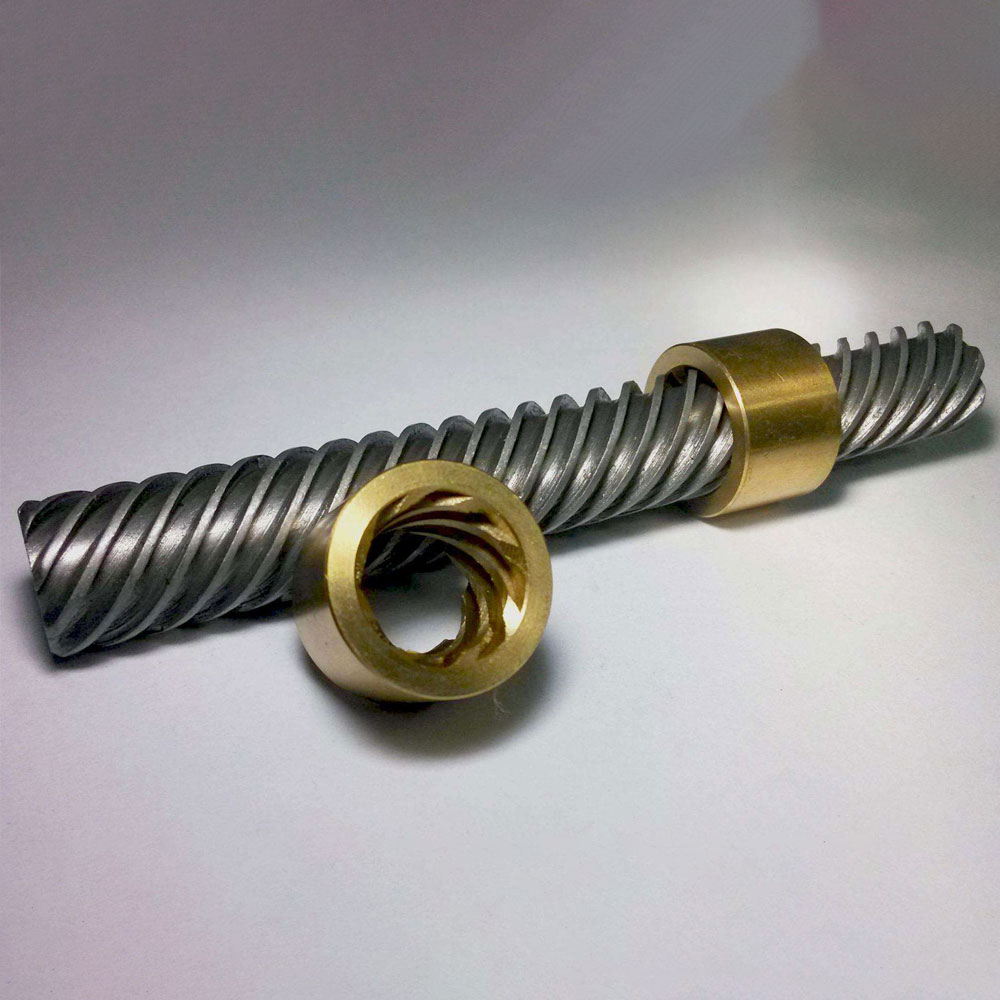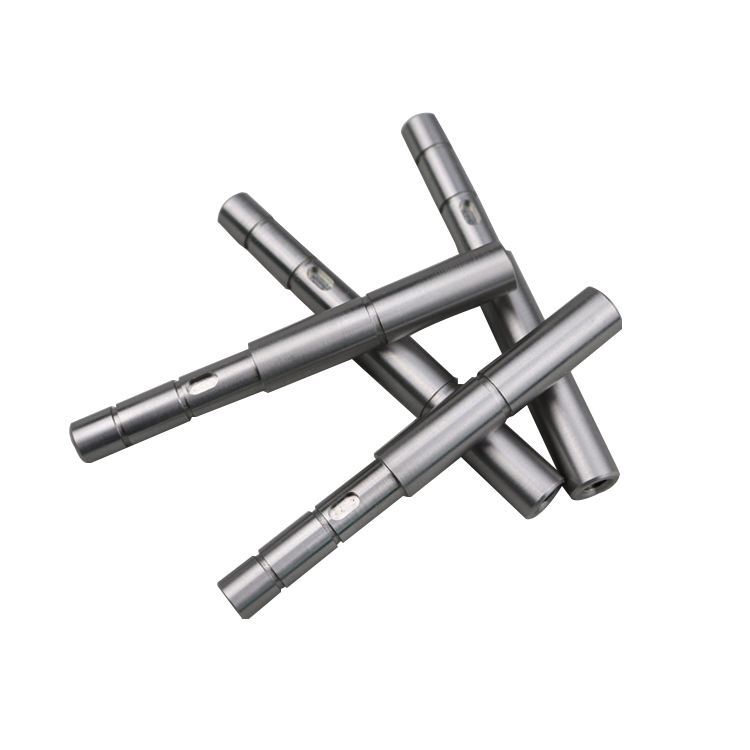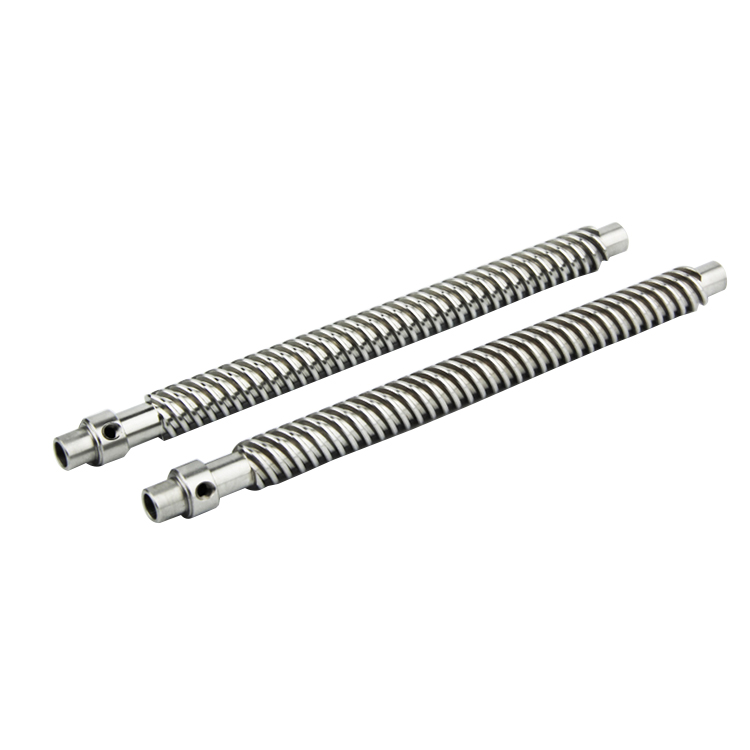Precision Cnc Machining Shaft Technology - PTJ Shop
by xiaolong luo cnc machining shop1. Function, structural characteristics and technical requirements of shaft parts
Shaft parts are one of the typical parts often encountered in machines. It is mainly used to support transmission components, transmitting torque and bearing loads. The shaft type component is a rotating body part whose length is larger than the diameter, and generally consists of an outer cylindrical surface, a conical surface, an inner hole and a thread and a corresponding end surface of the concentric shaft. According to the shape of the structure, the machining shaft parts can be divided into an optical axis, a stepped shaft, a hollow shaft, a crankshaft and the like.

A shaft having an aspect ratio of less than 5 is called a short axis, and a length greater than 20 is called an elongated shaft, and most of the axes are somewhere in between.
The shaft is supported by bearings, and the shaft section that cooperates with the bearing is called a journal. The journals are the assembly reference for the shafts. Their accuracy and surface quality are generally required. The technical requirements are generally based on the main functions and working conditions of the shaft. Generally, the following items are available:
(1) Dimensional accuracy
In order to determine the position of the shaft, the bearing journal is usually required to have a high dimensional accuracy (IT5~IT7). The journal size accuracy of the assembly drive is generally low (IT6~IT9).
(2) Geometric accuracy
The geometric accuracy of the shaft parts mainly refers to the roundness, cylindricity, etc. of the journal, the outer cone, the Morse cone, etc., and the tolerance should generally be limited within the dimensional tolerance. For inner and outer circular surfaces with high precision requirements, the allowable deviation shall be marked on the drawing.
(3) mutual positional accuracy
The positional accuracy requirements of cnc machining shaft are mainly determined by the position and function of the shaft in the machine. Generally, the coaxiality of the journal of the assembled transmission member to the supporting journal should be ensured, otherwise the transmission accuracy of the transmission member (gear, etc.) will be affected and noise will be generated. For a normal precision shaft, the radial runout of the matching shaft section to the support journal is generally 0.01 to 0.03 mm, and the high precision shaft (such as the main shaft) is usually 0.001 to 0.005 mm.
4) Surface roughness
Generally, the surface diameter of the shaft diameter matched with the transmission member is Ra2.5~0.63μm, and the surface roughness of the bearing shaft diameter matched with the bearing is Ra0.63~0.16μm.
2. Blanks and materials for shaft parts

(1) Blanks for shaft parts
Shaft parts can be selected from blanks, forgings and other blanks according to the requirements of use, production type, equipment conditions and structure. For shafts with different outer diameters, the rods are generally dominated; for stepped shafts with important outer diameters or important shafts, forgings are often used, which saves materials and reduces the amount of machining work. Improve mechanical properties.
Depending on the scale of production, the forging methods of blanks are free forging and die forging. For small and medium batch production, free forging is used, and mass forging is used for mass production.
(2) Materials for shaft parts
Shaft parts should be made of different materials according to different working conditions and usage requirements and adopt different heat treatment specifications (such as quenching, normalizing, quenching, etc.) to obtain certain strength, toughness and wear resistance.
45 steel is a commonly used material for shaft parts. It is cheaper and has good cutting performance after quenching and tempering (or normalizing), and it can obtain high mechanical strength such as high strength and toughness. The surface hardness after quenching can be obtained. Up to 45~52HRC.
40Cr and other alloy structural steels are suitable for shaft parts with medium precision and high speed. These steels have good comprehensive mechanical properties after quenching and quenching.
Bearing steel GCr15 and spring steel 65Mn, after quenching and tempering and surface quenching, the surface hardness can reach 50~58HRC, and has high fatigue resistance and good wear resistance, which can produce high precision shaft.
The spindle of a precision machine tool (such as a grinding wheel shaft and a coordinate boring spindle) can be made of 38CrMoAIA nitrided steel. After quenching and tempering and surface nitriding, the steel not only achieves a high surface hardness, but also maintains a soft core and thus has good impact toughness. Compared with carburized and quenched steel, it has the characteristics of small heat treatment deformation and higher hardness.

3. There are several ways to machine shaft parts.
The shaft type should be divided into high precision, and the general, high precision should be machined from both ends of the center hole, so that the concentricity of each dimension of the shaft can be guaranteed. It is also advantageous for the next step of grinding machine processing. The center frame is used for the long axis and the root tool holder for the thin axis. For the general requirements, a three-jaw chuck clamp can be used at one end. The processing method of a head item.
The disc parts are mounted with a three-jaw chuck or with a fixture.
The set of parts is like roughing after high heart requirements. After finishing the inner hole, the mandrel is sleeved on the outer circumference.
Shaped special fixtures are used for finishing
PTJ Shop Are Custom manufacturer of aluminum, brass, steel, and stainless shafts. Capabilities include CNC turning, CNC vertical milling, centerless grinding, gear hobbing, and screw machining. Manufacturing services are available for both production and prototype applications. Secondary and outsourced services include broaching, sawing, coating, plating, and heat treating. Industries and applications include heavy equipment, transportation, pneumatics, hydraulics, and automotive.
Sponsor Ads
Created on Nov 21st 2019 19:17. Viewed 365 times.
Comments
No comment, be the first to comment.



